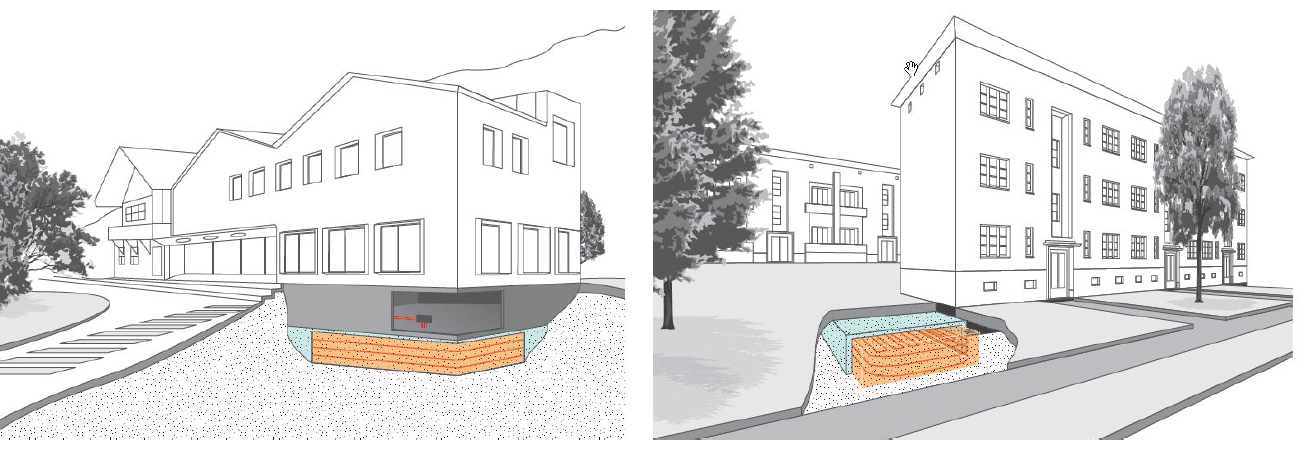This paper investigates numerical methods for simulations of the short-term behavior of a geothermal energy storage. Such simulations are needed for the optimal control and management of residential heating systems equipped with an underground thermal storage. There a given volume under or aside of a building is filled with soil and insulated to the surrounding ground. The thermal energy is stored by raising the temperature of the soil inside the storage. It is charged and discharged via pipe heat exchangers filled with a moving fluid. Simulations of geothermal energy storages aim to determine how much energy can be stored in or taken from the storage within a given short period of time. The latter depends on the dynamics of the spatial temperature distribution in the storage which is governed by a linear heat equation with convection and appropriate boundary and interface conditions. We consider semi- and full discretization of that PDE using upwind finite difference schemes and study associated stability problems. Numerical results based on the derived methods are presented in the companion paper [17].
翻译:本文探讨模拟地热能源储存短期行为的数字方法,这种模拟是为了优化控制和管理配备地下热储存的住宅供热系统而需要的。建筑物下或外的某一体积装满土壤,与周围地面隔绝。热能通过提高贮存中的土壤温度储存。热能通过装有移动液体的管道热交换器充电和排放。地热能源储存的模拟旨在确定在某一短时期内贮存中能储存或取出多少能量。热能储存的模拟取决于储存中空间温度分布的动态。贮存中由直线热方和对流及适当的边界和接口条件管理。我们考虑利用上风的有限差异办法和研究相关的稳定性问题,根据衍生方法得出的数值结果在随附的文件中(17)提出。








